|
|
|
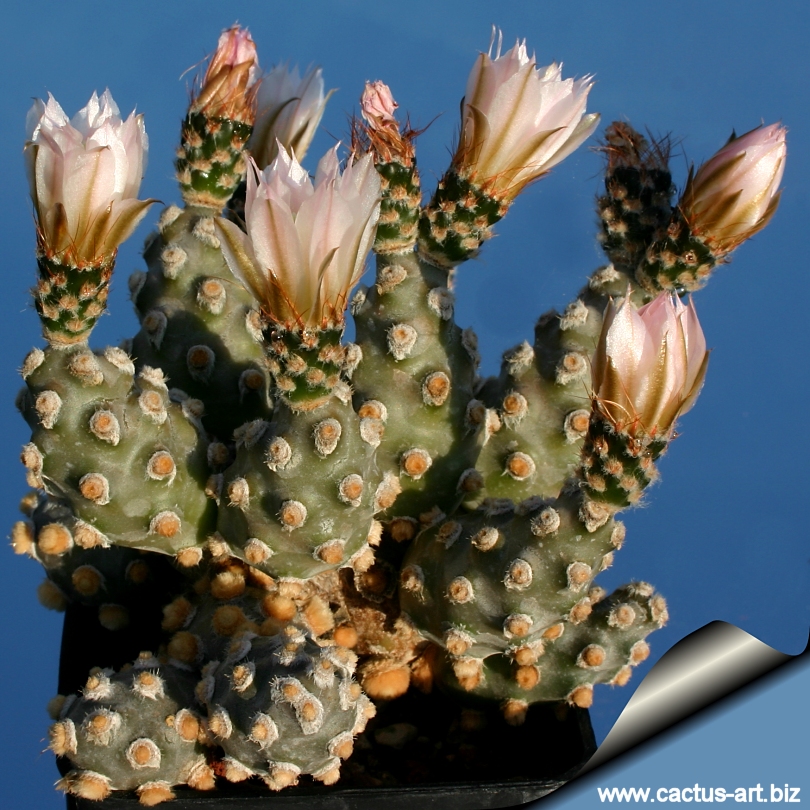
Areoles
with yellow-brown
glochids
and white felt .
White blooms with a greener
throat.
Morphology (Identifying
Characteristics): Small
clumping
segmented
succulent, In cultivation grows as a small erect
segment chains. In
habitat the plants stay smaller because the uppermost
segments are
detachable and drop easily.
Areoles : Very ornamental with bright yellow-brown
glochids and white
felt.
Spines:
Spineless.
Flower:
Dirty white or very pale pink a little
hyaline with a green centre and green
filaments.
Pericarp is comparatively small and has areoles furnished with
bristle-like
spines as strong as the one on the young
shoots.
|
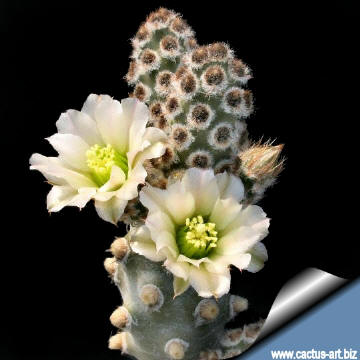
Blooms |
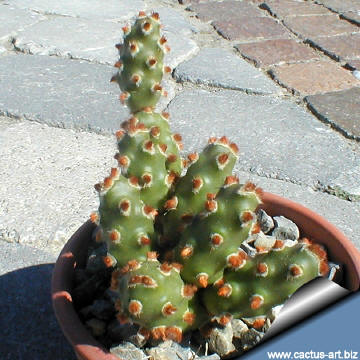
The "Red
glochid form" |
|
Cultivation: It is easy to grow but usually couldn’t get very tall
as segment kept falling apart. It is fairly cold resistant and hardy to
-9°C depending on the clone, Need full sun, (with insufficient
illumination stems get thinner as a result of the lack of
sun) The main growing period is spring. It might produce some new
segments in the autumn too. Needs good drainage. Propagation is through
segment cuttings, or occasionally seeds The little glochids at the base
of these larger spines are quite a nuisance, and it is best to use
gloves to handle this plant.
|
|
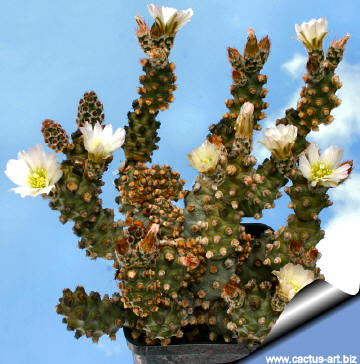 |
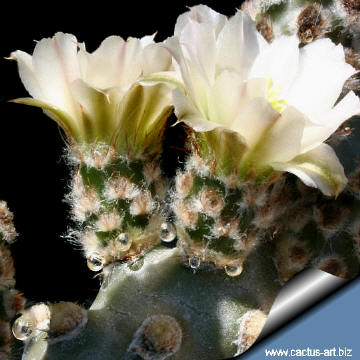 |
|
The abundant
guttation from the
areoles
at the base of
hypanthium at
anthesis,
a phenomenon common among most Tephrocacti |
|
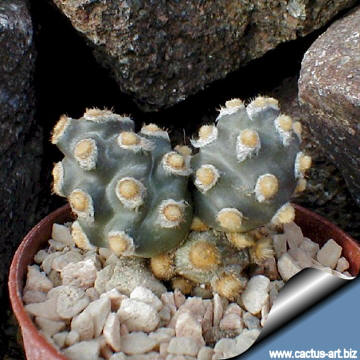 |
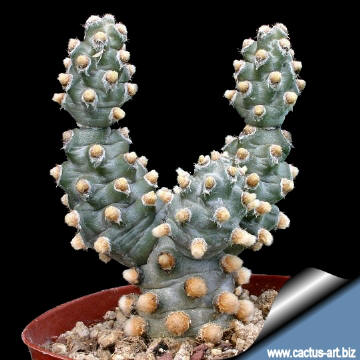 |
|
The articles are spineless glaucous.
|
|
Advertising
|
|
|
|
Family:
Cactaceae
(Cactus Family)
Scientific Name:
Tephrocactus
molinensis
(Speg.) Backeb. 1953
Type:
Exsiccata:
“Opuntia schumannii-Tephrocactus
molinensis” (LPS 14335).
Lectotype designated by Kiesling (1984a: 230, as
type).
Corp.
Basionym:
Opuntia molinensis
Spegazini.
Published
in: Anales Soc. Ci.
Argent. 96: 63. 1923,
nom.
nov.
prop. Opuntia schumannii Speg.
in Anales Mus. Nac.
Buenos
Aires 11 (ser. 3, 4): 511. 1905,
nom illeg. (non
F. A. C. Weber).
Protologue:
“Hab.
Semel abunde prope Molinos,
Prov.
Salta”.
Photographs: LP: without data. Later, Spegazzini (1925: 102) published this photograph, although he did not mention if it corresponds to the type.
Obs.: Spegazzini (1923) created a
new name: “Opuntia
molinensis Speg. (nom.
nov.) = O.
Schumanni
Speg. (non Web.), Cactacearum
platensium tentamen,
nº 106”, since the name Opuntia schumanni was already created by Weber
in 1904.
Distribution:
Argentina (Salta, Los Molinos)
Habitat: Grows a
open area among wide spread Trichocereus pasacana.
Notes: At the end of the
dry season the
cladodes are very
dehidrated and plants
retract almost at
soil level.
Etymology:
The
genus
name
"Tephrocactus" derives from the Greek
adjective “tephros (τεφρος)” meaning “ash
coloured” plus the connective vowel “o” used in botanical
Latin for Greek words , and the word “cactus” (an
old genus name)
(The genus name implies: “ash
coloured cactus”).
The
species name "molinensis"
comes from "Los Molinos", name of the original location from which the species is native.
Synonyms:
-
Opuntia glomerata andicola
-
Opuntia molinensis
-
Maihueniopsis molinensis]
|
|
|
|
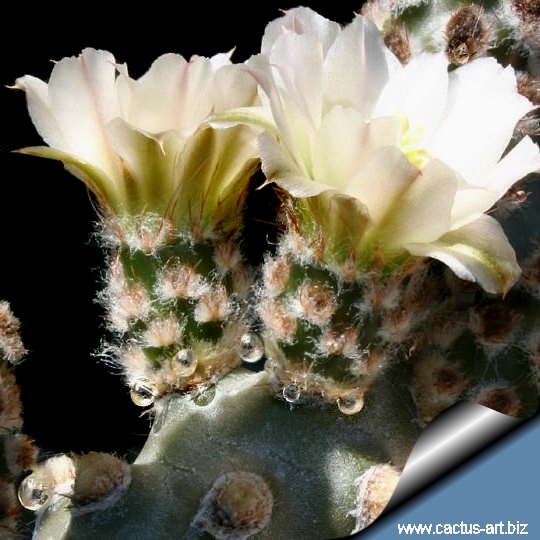 |
|
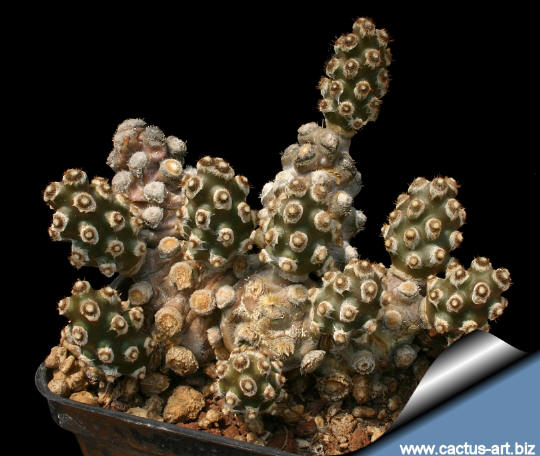
Photo of conspecific taxa, varieties, forms and
cultivars of Tephrocactus molinensis:

 |
|